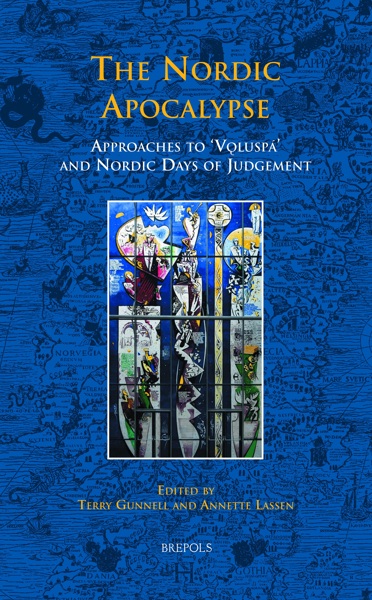
Time, Space, and Narrative in Medieval Icelandic Literature
Ben Allport, Alison Finlay (eds)
- Pages: approx. 418 p.
- Size:156 x 234 mm
- Language(s):English
- Publication Year:2026
- € 120,00 EXCL. VAT RETAIL PRICE
- ISBN: 978-2-503-61223-2
- Hardback
- Forthcoming (Feb/26)
- € 120,00 EXCL. VAT RETAIL PRICE
- ISBN: 978-2-503-61224-9
- E-book
- Forthcoming
*How to pre-order?
A new, multi-faceted collection of studies of the structural, narrative, and symbolic functions of time and space in the literature of medieval Iceland.
Ben Allport is a researcher on the ELITES project at Instituttet for arkeologi, konservering og historie, Universitetet i Oslo. He is interested in the creation of community in narrative sources.
Alison Finlay is Emeritus Professor of Medieval English and Icelandic Literature at Birkbeck, University of London. She writes on Poets’ sagas and skaldic verse, and has translated many saga texts into English.
From the twelfth to the fourteenth centuries, Icelanders were a responsible for a vast output of literature, extending well beyond the Sagas of Icelanders for which they are most well-known. These varied widely in style and subject, composed in different contexts by different members of society for differing purposes. Time and space formed central thematic and structural pillars in many of these texts as they explored the profound effects wrought on their society over time and reconciled their peripheral position in relation to the world’s perceived Mediterranean centre.
How did these medieval Icelandic authors understand time and space? How did they portray, employ, and manipulate these concepts in order to craft their narratives? By bringing together genre-spanning articles from a broad range of Norse scholars, this collection offers a comprehensive treatment of these questions. Exploring genres ranging from the Sagas of Icelanders to hagiography and from Eddic poetry to ecclesiastical history, the contributions gathered here apply varied theoretical frameworks, digital methodologies, and episodic analyses to draw new conclusions and shed new light on this intriguing corpus.
List of Illustrations
Introduction
Emily Lethbridge, Ben Allport, and Alison Finlay
Living on the Edge: Mikhail Bakhtin's Chronotope and the Sagas of Icelanders
Siân Grønlie
Limen to Maturity: The Wild Forest of Romance in Icelandic Sagas
Védís Ragnheiðardóttir
The Immanent Saga of Places and Place-names
Jack Threlfall Hartley
The Dawn of the Christian Age and its Contexts in the Versions of Færeyinga saga
Andreas Schmidt
Human, All Too Human: Space, Time, and Beyond in Benedicts Saga
Mauro Camiz
Narrative Strategies in the Old Norse Versions of the St Sunniva Legend
Alessia Bauer
The Original Angst: Marvels and the Annihilation of Time and Hunger in Medieval Icelandic Literature
Andrea Maraschi
Hvamm-Sturla Reweaves his Web: How Saga Networks Change over Time
Richard Gaskins
Character Introductions: Positioning Personality in Time and Space
Joanne Shortt Butler
Timing/Taming Grettir’s Temper: A Distributed Reading
Slavica Ranković and Miloš Ranković
Living on Borrowed Time: The Spatiotemporal Aesthetic of the Outlaw Saga
Sarah Harlan-Haughey
The Space of Narration in Völuspá and its Implications on Time and Space
Lukas Rösli
Time, Space, and Narrative Patterning in Martinus saga byskups
Rory McTurk
Chronological Structure of Íslendingabók and its Legacy
Ben Allport




